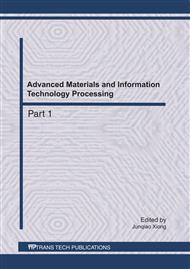p.609
p.616
p.622
p.629
p.633
p.639
p.645
p.651
p.657
Web-Based Virtual Workplace Environment for Improving Safety
Abstract:
Workplace layout design by itself is time consuming and costly. There is evidence that human perception of interaction with real and virtual objects is indistinguishable in some instances. In this work, a virtual CNC workplace environment is developed which is accessible through the web. Through this environment, a user who has no experience on machining could learn the CNC operation method by interactively driving the virtual machine. The model enables testing the influence of variations in lighting, distance from machines, and the presence of a virtual human on human perception. By collecting and analyzing the perception data in terms safety, it provides decision basis for improving facility design and reduce hazards in the workplace.
Info:
Periodical:
Pages:
633-638
Citation:
Online since:
July 2011
Authors:
Price:
Сopyright:
© 2011 Trans Tech Publications Ltd. All Rights Reserved
Share:
Citation:


